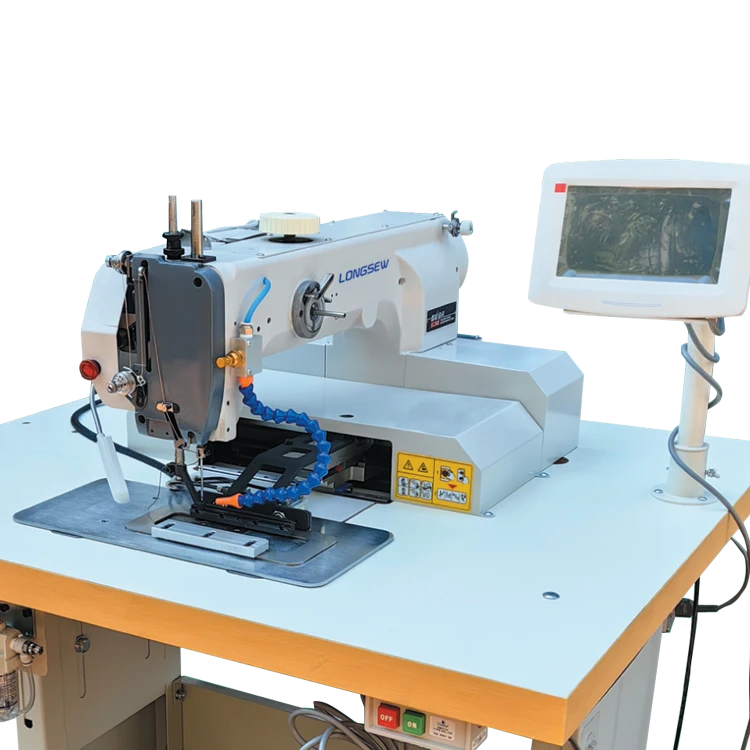Innovative Computerized Sewing Machines for Precision Pattern Creation and Seamless Projects
The Evolution and Impact of Computerized Pattern Sewing Machines
In the ever-evolving landscape of textile and fashion industries, computerized pattern sewing machines have emerged as a revolutionary force, significantly transforming the way garments are designed and produced. These advanced machines leverage technology to enhance efficiency, precision, and creativity in sewing, catering to the needs of both large-scale manufacturers and independent designers.
The Technology Behind Computerized Sewing Machines
At the heart of computerized pattern sewing machines is sophisticated software that enables users to create, edit, and manipulate sewing patterns with ease. Unlike traditional sewing machines, which rely heavily on manual input, computerized machines come equipped with a variety of features such as LCD screens, USB ports for pattern uploads, and even Wi-Fi connectivity. This technological advancement allows for a seamless integration of design software and sewing machines, fostering a more streamlined workflow.
The introduction of computer-aided design (CAD) into the sewing process has changed the game entirely. Designers can now visualize and modify their patterns digitally before committing to fabric. This not only reduces material waste but also allows for rapid prototyping, which is essential in the fast-paced fashion industry. The ability to simulate how fabrics will interact with different designs helps in making informed decisions and adjustments, leading to a more refined end product.
Benefits for Designers and Manufacturers
One of the most significant advantages of computerized pattern sewing machines is their precision. These machines can execute intricate designs with exceptional accuracy, which is particularly important for contemporary fashion where intricate details and perfect fits are paramount. The automation of stitching patterns minimizes human error, leading to consistent quality across multiple pieces, something that is crucial in both high-end fashion and mass production.
Moreover, the speed of production is greatly enhanced with computerized machines. Traditional sewing methods often require hours of manual labor for complex patterns; however, computerized machines can complete these tasks in a fraction of the time. This efficiency not only boosts productivity but also allows designers to meet tight deadlines and respond promptly to market trends.
computer pattern sewing machine

In addition to efficiency and precision, computerized sewing machines enable a higher level of creativity. Designers can explore more complex and unique patterns, experimenting with different stitches and styles that would be challenging to create by hand. This freedom encourages innovation in the textile industry and has led to the emergence of new fashion trends.
The Rise of Home Sewing
While the impact of computerized pattern sewing machines on the manufacturing sector is substantial, they have also gained popularity among home sewers and hobbyists. The accessibility of these machines means that anyone with a passion for sewing can experiment with advanced features previously reserved for professionals. Many models are user-friendly, allowing beginners to create sophisticated patterns with ease.
The home sewing community has embraced computerized machines for their versatility. From quilting to garment making, enthusiasts can utilize various functionalities such as automatic thread cutting, stitch variety, and built-in embroidery designs. As a result, more individuals are turning to sewing as a creative outlet, contributing to a resurgence in DIY fashion and sustainable practices by repurposing old garments or creating new pieces from scratch.
The Future of Sewing Technology
As technology continues to advance, the future of computerized pattern sewing machines looks promising. Innovations such as artificial intelligence (AI) and machine learning are expected to further enhance the capabilities of these machines. For example, AI could potentially analyze fabric behavior and recommend optimal stitch types, while machine learning algorithms could identify patterns of user preferences, providing personalized suggestions for future designs.
In conclusion, computerized pattern sewing machines have transformed the sewing landscape, bridging the gap between traditional craftsmanship and modern technology. They have empowered designers and manufacturers to push boundaries in creativity, efficiency, and precision. As the industry continues to embrace technological advancements, the potential for innovation in sewing is limitless, making the future of fashion and textiles an exciting realm to explore.
-
Leather Sewing Machine: The Industrial Standard for Tough MaterialsNewsJul.18,2025
-
Sail Making Machine: Heavy-Duty Stitching for Industrial and Marine NeedsNewsJul.18,2025
-
Sling Sewing Machine: The Backbone of Heavy-Duty FabricationNewsJul.18,2025
-
Leather Sewing Machine: Precision for Heavy-Duty StitchingNewsJul.18,2025
-
Big Bag Sewing Machine: Powering the Future of Bulk PackagingNewsJul.18,2025
-
FIBC Sewing Machine: Essential Equipment for Bulk Bag ProductionNewsJul.18,2025
-
Heavy Duty Leather Sewing Machine: A Must-Have for Professional LeatherworkNewsMay.28,2025





























